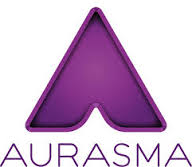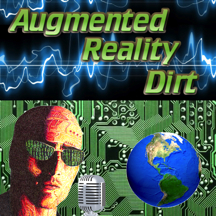The chosen theme for AWE 2014 has been described as: Make the World More Interactive.
Why, you ask?
 Because an interactive world makes everything we do more engaging, productive, and ultimately more fun.
Because an interactive world makes everything we do more engaging, productive, and ultimately more fun.
Ok, that sounds cool, but what does it really mean – an Interactive World? What’s new about it and why now?

Chinese innovation in wearables from the 18th century.
Fact 1: 2014 is clearly emerging as the year of the wearable.
Fact 2: The Internet of Things is becoming huge and valued by corporations like Cisco at over 14 trillion dollars.
Fact 3: Augmented Reality have turned a corner and is showing real value.
That’s all great – but what’s the motivation to unify these 3 emerging technologies into one story? How are these technologies transforming our lives? What is this interactive world?
When you hear the term “interactive” – you think computers right? So what does it have to do with the physical world?
In the last 30 years – since the Apple Lisa – the word “Interactive” has indeed been defined as a 2 way communication with a computer: A graphical user interface on a screen, controlled with a keyboard and a mouse.

But if you keep going back in time, the first use of the term “Interactive” according to Webster’s Dictionary dates way back to 1832 with the original meaning defined as: “acts upon another person or thing”.
I think that’s fascinating; think about it – for a million years humans learned by interacting with their surrounding environments. It was nature’s way to evolve us to what we are today. And that need to interact with the world has been imprinted in our DNA.
I look at the last 30 years as a diversion; we have been hostages to screens, big and small…

We now have a chance to break away and get back to the real world.
So I did some more digging for new and fresh definitions of the term “Interactive” and found some interesting results. “Interactive” is now described as “Being able to manipulate or control the world.”
Unlike what you may think, it is not about evil geniuses trying to take over the world but about creating a digital layer to enable us to interact with the physical world: with people, places and things.
An interaction layer typically manifests itself with 3 elements: a device, an intuitive interface, and a communication method with objects.
I see these 3 elements as: Wearable tech, Augmented Reality, and The Internet of Things.
Ask any digital native and you’ll see 2 conflicting needs:

On the one hand, we want computers to get smaller and cheaper while getting better and faster at improving our lives and work.
Wearables are exactly that – mini computers on track to shrink and disappear onto our bodies.
On the other hand, we want bigger and sharper displays; we want to see more and better (and preferably in 3D). And we also want a more intuitive interaction with the content at hand. But if computers are so small (take a smart watch for example) where are we going to hide these big screens? And how are we going to interact with them? There isn’t much touch area on a smart watch.
How do we bridge this gap in expectations?
The answer lies in the Interactive World, where augmented reality and natural interactions serve as the interface between wearables and the World.

Augmented reality is the new display and the new mouse.
There are many different methods for digitally blasting photons into our eyes at high definition: Smart phones, smart glasses – whether see-thru, video-thru, or virtual retinas. It could also be in the form of a virtual mirror, or through projection mapping on a nearby surface.
When it comes to interaction, a slew of new input methods have emerged: Voice, gestures – whether detected by visual sensors such as a 3D camera, or body sensors like the Myo Arm band. We can also track head and gaze movement, and even use mind control as an interface. These interaction techniques are currently competing on the limited real estate on our heads and bodies, and will start disappearing into our clothing and eventually into our anatomy.

Courtesy Vuzix and SAP video
Take a warehouse picker with a pair of smart glasses above. His wearable shows him an augmented reality visualization of how to navigate around the warehouse to find an item for shipment. When the item is picked and is visually recognized, the wearable device updates the back end system and kicks of the appropriate business process. Augmented Reality serves as the interface between the warehouse picker’s wearable and his world.

Courtesy Meta Glasses video
Here’s a guy at his home with a wearable device that tracks his gestures and tells the internet-connected-blinds to rise. Once again, Augmented Reality serves as the interface between the wearable and the world.
Augmented Reality provides the new display and the new mouse and it helps bridge the gap in expectations: Small computers? Big screens? Natural interactions? No problem!
So let’s meet at AWE next week and help make the world a more interactive place. Because if we succeed – our life and work will be more engaging, productive, and ultimately more fun ![]()



























